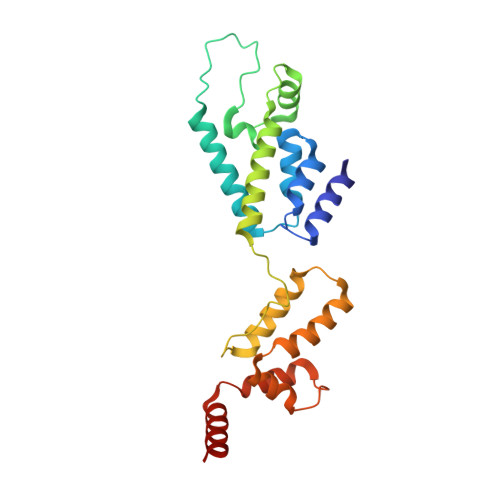An atomic model of HIV-1 capsid-SP1 reveals structures regulating assembly and maturation.
Schur, F.K., Obr, M., Hagen, W.J., Wan, W., Jakobi, A.J., Kirkpatrick, J.M., Sachse, C., Krausslich, H.G., Briggs, J.A.(2016) Science 353: 506-508
- PubMed: 27417497
- DOI: https://doi.org/10.1126/science.aaf9620
- Primary Citation of Related Structures:
5L93 - PubMed Abstract:
Immature HIV-1 assembles at and buds from the plasma membrane before proteolytic cleavage of the viral Gag polyprotein induces structural maturation. Maturation can be blocked by maturation inhibitors (MIs), thereby abolishing infectivity. The CA (capsid) and SP1 (spacer peptide 1) region of Gag is the key regulator of assembly and maturation and is the target of MIs. We applied optimized cryo-electron tomography and subtomogram averaging to resolve this region within assembled immature HIV-1 particles at 3.9 angstrom resolution and built an atomic model. The structure reveals a network of intra- and intermolecular interactions mediating immature HIV-1 assembly. The proteolytic cleavage site between CA and SP1 is inaccessible to protease. We suggest that MIs prevent CA-SP1 cleavage by stabilizing the structure, and MI resistance develops by destabilizing CA-SP1.
- Structural and Computational Biology Unit, European Molecular Biology Laboratory, Meyerhofstraße 1, 69117 Heidelberg, Germany. Molecular Medicine Partnership Unit, European Molecular Biology Laboratory-Universitätsklinikum Heidelberg, Heidelberg, Germany.
Organizational Affiliation:
















